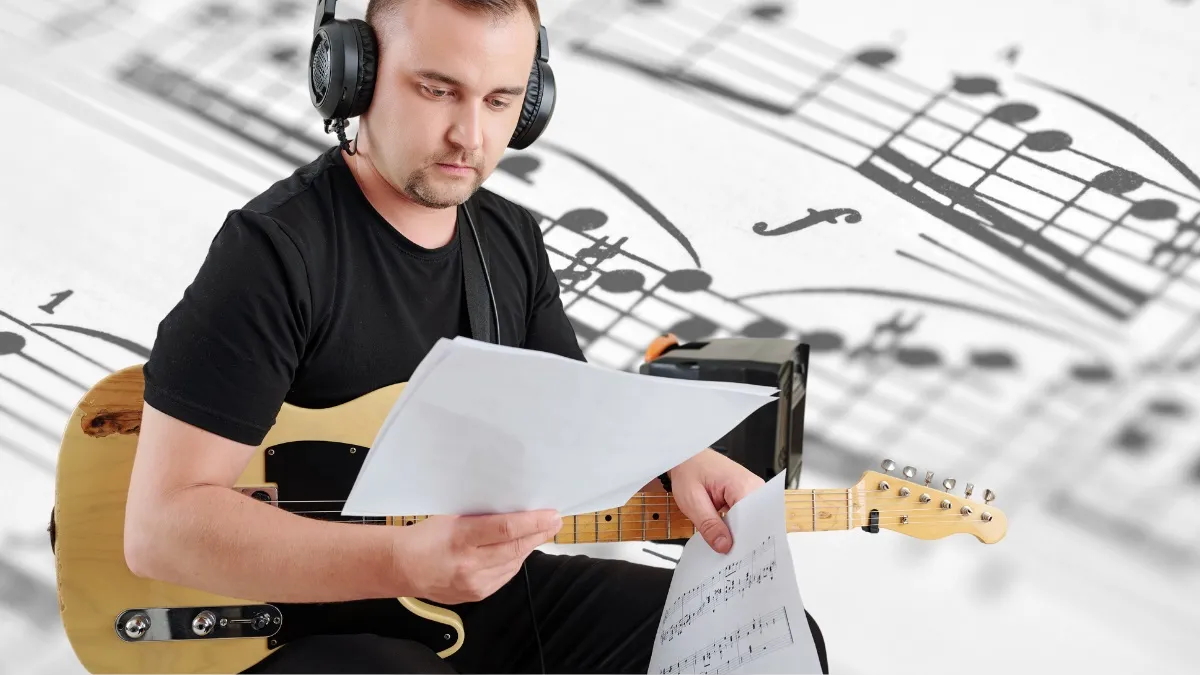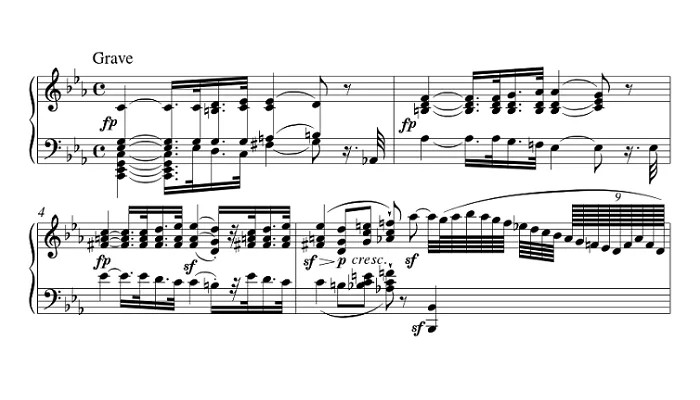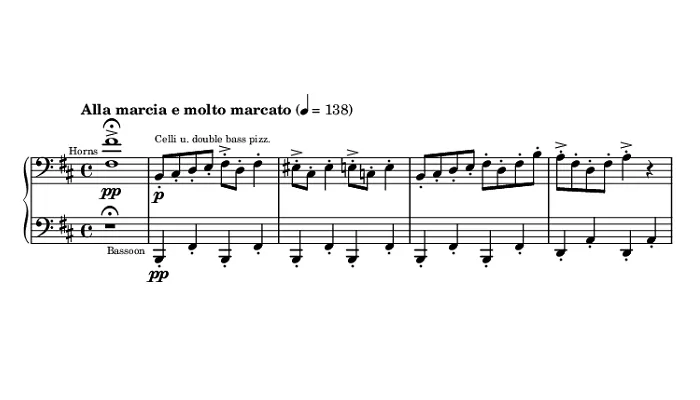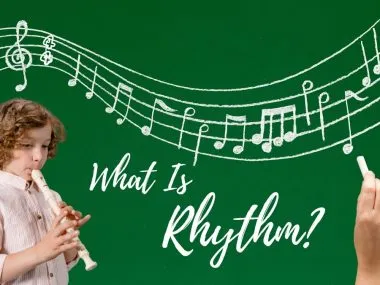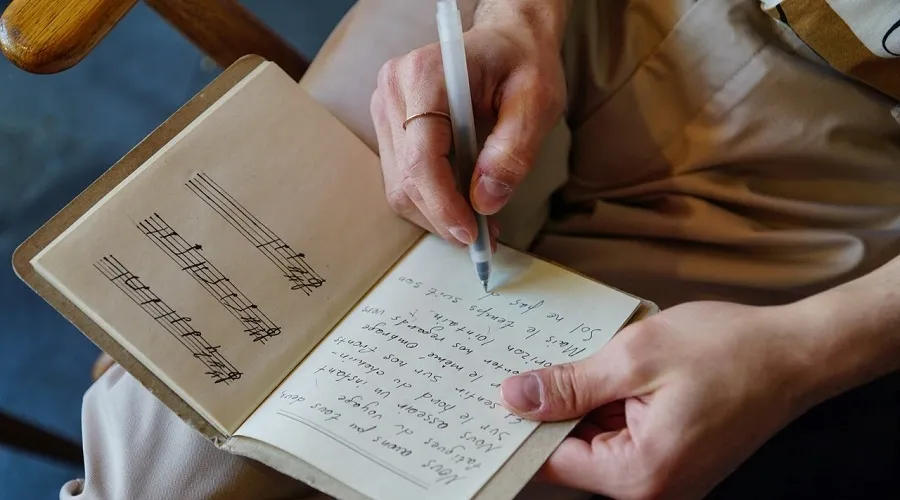There’s a misconception that the word forte comes from the French word fort – or strong. However, most experts agree that this word has an Italian origin, just like the rest of most music-related vocabulary.
According to its definition, it means strong. So, what is forte in music?
There are several definitions that you need to know if you’re into playing or studying music, and in this article, we’ll explore the meaning of forte in music, when it should be used, and the most famous examples of using forte in music. So, keep on reading.
What Is Forte In Music?
Forte has several meanings in a musical context. It refers to a loud section in music or the way the music is played loudly. Typically, composers and musicians use the word “forte” to refer to music being played louder than a phrase that precedes or follows it.
Forte is a crucial part of music dynamics that shows composers, instrumentalists, and singers how soft or loud the music played will be. On a music notation, forte is referred to using the letter f.
The symbol of forte is sometimes displayed with other symbols that refer to the music being played from soft to loud or from loud to soft. These are known as crescendo and decrescendo.
Understanding the music dynamics is a crucial part of your music study, whether you’re studying music theory or learning to play music.
As a matter of fact, the piano instrument was initially called pianoforte because, unlike other keyboard instruments, this one could play dynamics.
What Are Music Dynamics?
The dynamics of music refer to the change in loudness as the musician moves between different musical phrases or notes. It’s determined by how strongly a musician would press the keys of their instrument or use their voice to deliver a note.
The interpretation and execution of dynamics depend on the musical context. So the symbol for forte can have a different effect in another music notation or another section of the same piece. Moreover, the overall result will be affected by the changes in timbre.
Using dynamics is one of the tools that musicians can use to express their state. They’re used to give a piece its distinctive character, help to display a specific emotion, and set it as part of a particular genre.
Any change in the music dynamics will greatly affect how the music feels and how it’s interpreted by the audience.
For example, in a music soundtrack, dynamics can be used to play the same musical notes in different scenes. The same musical phrase can be played in a battle scene and in a romantic scene with two different dynamics, emphasizing different emotions every time.
This is why dynamic markings like forte are always relative, depending on where the marking is, which melody is being emphasized, and which instrument or voice is playing the note.
This means that forte doesn’t refer to a precise level of loudness that needs to be achieved whenever you see it on a music notation.
When found at the beginning of a musical phrase, forte will refer to a louder note, but it would still be lower than a note played in the middle of the phrase. This is done to guarantee that the musical phrase is shaped harmonically and adequately.
Similarly, some instruments are naturally louder than others, so even if the whole music phrase is marked at the same dynamic level, there would still be differences in the ranks of loudness.
The pitch of the instrument will also affect how the music sounds, given that the whole musical phrase is marked with the same dynamic symbol.
For example, a trumpet is louder than a piano, so even if a piano is set to play a note in forte, it would still sound softer or lower. Likewise, a guitar playing a forte would still be lower than a tuba playing a piano note.
High-pitched instruments like brass instruments and violins would still sound louder than another low-pitched instrument like a double bass, even if both instruments are playing at the same decibel level.
What Are The Different Dynamics In Music?
The basic dynamic indications are piano and forte. Piano means quiet or soft and is indicated by p, while forte means loud or strong and is marked by f.
In addition to these 2 basic dynamic degrees, musicians use other more subtle degrees in music notation to express emotions.
- mpis mezzo-piano and means moderately quiet.
- più pis più-piano and means more quiet.
- mfis mezzo-forte and means moderately loud.
- più fis più forte and means more loud.
- ppis pianissimo and means very quiet.
- pppor triple piano is pianississimo and means very very quiet.
- ffis fortissimo and means very loud.
- fffor triple forte is fortissimo and means very very loud.
- sfzis sforzando and means a sudden or forced loud sound.
The combination of these different dynamics changes the mood and the emotions in a single musical phrase and adds character to every musical composition. However, not all music pieces need to have all dynamics.
Some composers use very few dynamics, while others will use a lot. But the resulting music depends on the instrument playing it and the period of the music. The dramatic change in volume and intensity is like the fine-tuning of music.
If you’re experimenting with dynamics, you can change them from one performance to another in the form of improvisation. You will see that your performance will sound exceptionally different.
Examples of Using Dynamics in Music
There are several musical performances where dynamics were brilliantly used to show contrast in loudness and softness as the music progresses.
The buildup from extremely low and the progression to dramatically loud, and vice versa, using the same or different instruments is used to explain the emotional status of the scene where the music is played. Here are some of the most famous examples of how dynamics are incorporated into musical compositions.
1. In the Hall of the Mountain King
In the Hall of the Mountain King is composed by Edvard Grieg in 1875 as incidental music played during the sixth scene of act 2 in Henrik Ibsen’s 5-act play Peer Gynt.
This musical piece is played when the main character experiences a dream-like fantasy, and the music progresses to build up the emotions during the scene.
Thanks to its popularity, this musical performance was later recorded in a Jazz performance by Alvino Rey and a heavy rock version by the American rock band Big Brother and the Holding Company.
There were later other musical compositions that included elements from this music piece, recorded in progressive rock, symphonic metal, and progressive metal.
It was even used as the theme music for a slot game called Hall of the Mountain King and was incorporated into several TV ads, movies, and television series like The Birth of a Nation, Needful Things, and Mad Men.
2. Hungarian Dance No.5
The German Johannes Brahms composed a set of 21 dance pieces that range in duration from one to 5 minutes. The fifth dance is filled with contrasting movements that make it one of the most outstanding examples of using dynamics to display different emotions.
The music is performed in several tempos with various dynamics and was used in several theatrical releases. It was used in cartoons and famous movies like Charlie Chaplin’s The Dictator, as well as live comedy performances.
3. Symphony No. 94
Symphony No. 94 or the Surprise Symphony was written by Hayden in 1791 and lasted 23 minutes.
It’s called the Surprise Symphony because it contains a sudden fortissimo played all of a sudden at the end of the piano theme of the second movement. The music then returns to its piano dynamic.
Legend has it that the Austrian composer included the surprise element to wake up audience members who had the habit of falling asleep during the slower movements of symphonies.
4. Beethoven’s Symphony No. 5
Beethoven composed this symphony between 1804 and 1808 and is one of the most played classical compositions. The composition is full of contrasting dynamics.
It’s is one of the most popular symphonies and was later used in Disney’s movie Fantasia.
The symphony was a clear representation of the heroic style that Beethoven started back in Symphony No. 3. Modern versions of the symphony were later played by various artists, like Walter Murphy, who composed a famous Disco version.
5. The Stars and Stripes Forever
John Philip Sousa composed this patriotic American march in 1896, and almost 100 years later, it became the National March of the United States.
Because it’s a representation of the different states and regions in the US, every theme has some interesting dynamics to represent these places.
But before that, the music piece was used as a warning signal in show business. For example, in a theatre or a circus, the house band would play this theme in the case of an emergency to allow the personnel to arrange the emergency exit of the audience.
